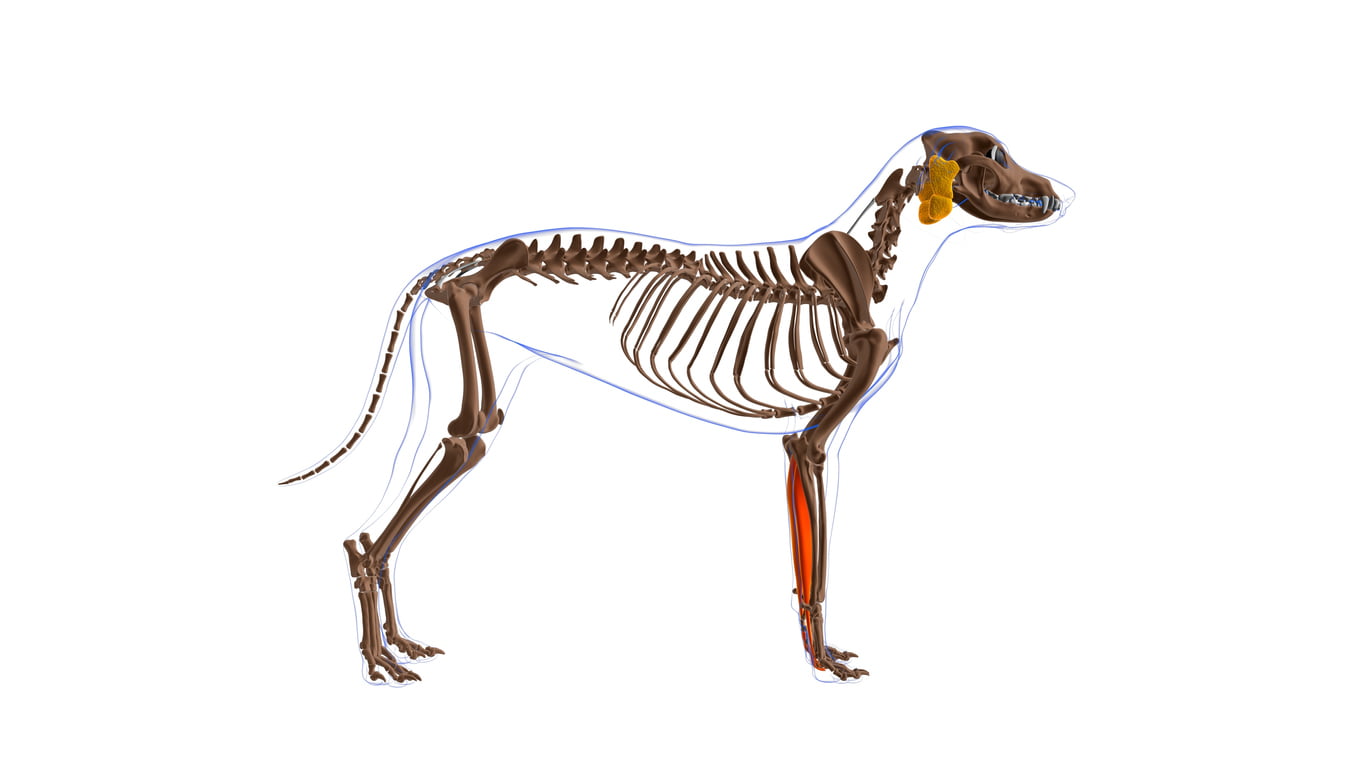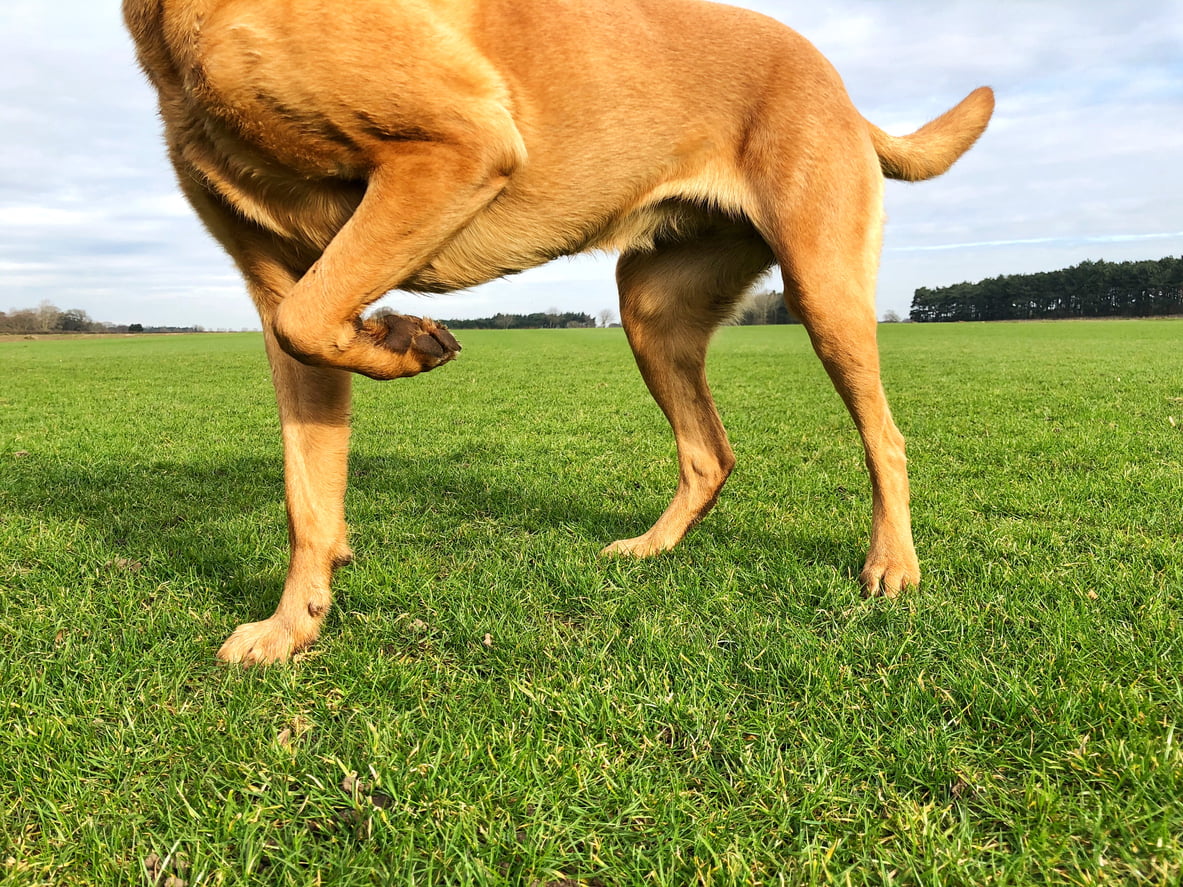As pet owners, we want the best for our beloved furry friends. We do everything we can to ensure their happiness and well-being, but one aspect of their health that is often overlooked is joint health. This is why joint health is important in dogs. Joint health plays a crucial role in a dog’s overall well-being and mobility, and maintaining it can make a world of difference in their quality of life. In this blog post, we will explore the importance of joint health for dogs, common joint issues, and how to maintain and improve joint health through nutrition, exercise, and lifestyle changes.
By understanding the significance of joint health and taking proactive measures, you can help your canine companion enjoy a happy, active life filled with play and exploration. So, let’s dive in and learn how to keep those tails wagging and paws moving.
Key Takeaways
- Joint health is essential for dogs to maintain an active and pain-free life.
- Early recognition of joint problems in dogs is key, with treatment options including medications, supplements, and surgery available to provide relief.
- Weight management through balanced nutrition, regular exercise, and monitoring can support joint health in canine companions.
The Significance of Joint Health in Dogs

Keeping your dog’s joints healthy is fundamental for their prolonged happiness and activity. Just like humans, dogs can experience joint pain and stiffness, which can significantly impede their quality of life and mobility. Developmental and degenerative joint diseases are the two categories that can affect a dog’s joint health, making it crucial to pay attention to your dog’s joints.
Ideally, canine joint health should be bolstered in the anticipatory stage instead of waiting for the reconstructive phase. Preventive actions to maintain and boost joint health can shield your pet from the incapacitating effects of joint disease, promoting a pain-free, active life.
Components of a Healthy Joint

A healthy joint is composed of various components, each with a specific function that contributes to the overall health and mobility of the joint. These components include:
- Cartilage
- Chondroitin
- Glucosamine
- Joint capsule
- Synovial membrane
- Articular cartilage
- Subchondral bone
Serving as a buffer between bones, cartilage aids in shock absorption and smooth movement, a vital factor in supporting dogs’ healthy joints. Chondroitin sulfate facilitates the lubrication of the joint, enabling smooth movement and minimizing friction. Glucosamine plays an essential role in preserving the structure of the joint, providing support and stability, and helping to alleviate the discomfort caused by swollen joints.
Other components, such as the joint capsule, synovial membrane, articular cartilage, and subchondral bone, also play important roles in maintaining the function and integrity of the joint.
Common Joint Issues in Dogs

Joint issues, such as arthritis, hip dysplasia, and degenerative joint disease, are common in dogs and can have a significant impact on their quality of life and mobility. Hip dysplasia and elbow dysplasia are two of the most frequent joint problems seen in dogs. Damaged cartilage in dogs’ joints can complicate joint repair and reduce mobility in elderly dogs.
In the following sections, we will delve deeper into:
- Arthritis – discussing its causes, effects on joint health, and available treatment options
- Hip dysplasia – discussing its causes, effects on joint health, and available treatment options
- Degenerative joint disease – discussing its causes, effects on joint health, and available treatment options
Our goal is to help your furry friend maintain a pain-free, active life.
Arthritis
Arthritis is a common joint issue in dogs, particularly osteoarthritis, which is a degenerative joint disease. The primary causes of osteoarthritis in dogs are age, genetics, and injury. The impacts of arthritis on joint health can be significant, resulting in pain, reduced mobility, and even lameness.
Proper treatment for osteoarthritis is crucial as it helps to prevent and manage joint pain, a key aspect of a dog’s quality of life. With appropriate treatment, many canines can experience a comfortable quality of life for years after a diagnosis of osteoarthritis.
Hip Dysplasia
Hip dysplasia is a condition in which the hip joint does not develop correctly, resulting in discomfort and reduced mobility. It is the result of a combination of genetic and environmental influences. Certain dog breeds, such as:
Individuals predisposed to developing joint stiffness may experience discomfort in their affected joints.
Treatment options for hip dysplasia include physical therapy, medications, and surgical intervention. Addressing hip dysplasia early and providing suitable treatment can minimize the condition’s impact on a dog’s mobility and quality of life.
Degenerative Joint Disease
Degenerative joint disease (DJD), or osteoarthritis, is the most prevalent cause of arthritis in canines. It occurs when the cartilage deteriorates around the bones, particularly in senior dogs whose synovium ceases to secrete lubricating fluid. Signs of DJD in dogs may include:
- pain
- stiffness
- lameness
- difficulty rising
- reduced mobility
Treatment options for DJD in dogs may include:
- Medications
- Supplements
- Physical therapy
- Lifestyle modifications
Early attention and suitable treatment for degenerative joint disease can minimize the condition’s impact on a dog’s mobility and quality of life.
Factors Affecting Joint Health

Various factors can affect a dog’s joint health, including:
- Age
- Breed
- Weight
- Injury
As dogs age, their joint cartilage will gradually deteriorate. Certain dog breeds, such as Labrador Retrievers, Golden Retrievers, German Shepherds, and Rottweilers, are predisposed to developing stiff joints. Carrying excess weight puts undue stress on a dog’s joints and cartilage, increasing the risk of stiff joints.
Consideration of these factors is crucial in maintaining and enhancing joint health in dogs. By considering the specific needs of your dog’s breed, age, and weight, you can take appropriate steps to support their joint health and ensure a happy, active life.
Identifying Joint Problems: Signs and Symptoms
Early intervention and treatment for joint problems in dogs hinges on recognizing the signs and symptoms. Dogs with joint problems may exhibit signs such as limping, rigidity, and difficulty in rising or reclining. Some indications of osteoarthritis in dogs include discomfort, inflammation, and reduced agility.
Consulting with a veterinarian is recommended if any of these signs appear in your dog. Early diagnosis and intervention can help manage joint pain and prevent further damage, ensuring your dog’s comfort and quality of life.
Treatment Options for Joint Issues in Dogs

Dogs with joint issues have various treatment options available, including medications, supplements, and potentially surgery. Joint supplements, such as glucosamine, chondroitin, and omega-3 fatty acids, provide long-term, safe treatments that can help reduce inflammation and pain, improve function, and impede the progression of joint damage and arthritis.
In more severe cases, surgical intervention may be necessary to reconstruct or reshape joint deformities and alleviate pain. Ensuring the dog’s comfort and quality of life hinges on appropriate treatment. By working closely with your veterinarian to identify the most appropriate treatment options for your dog’s specific joint issues, you can help them enjoy a more comfortable and active life.
Role of Nutrition in Joint Health
Proper nutrition is pivotal in supporting joint health and the overall well-being of dogs. In the following sections, we will discuss the importance of choosing the right dog food, incorporating supplements, and managing weight to support your dog’s joint health and mobility.
Selecting the appropriate dog food is crucial to provide your dog with the nutrients needed for their health.
Choosing the Right Dog Food
Selecting the appropriate dog food is crucial for supporting joint health and overall well-being in your canine companion. Dog food that contains essential ingredients such as glucosamine, chondroitin, and omega-3 fatty acids can help promote joint health and reduce inflammation. Some examples of dog food options that contain these ingredients include Purina ONE +Plus Adult Joint Health Formula, Orijen Senior Grain-Free High Protein, and Merrick Real Texas Beef & Sweet Potato Recipe.
Ensuring your dog receives proper nutrition supports both their optimal joint health and overall well-being. Providing a balanced diet that includes essential nutrients for joint health can help reduce inflammation and promote mobility in your furry friend.
Supplements for Joint Health
Incorporating joint supplements, such as glucosamine, chondroitin, and green-lipped mussel extract, can provide additional benefits for joint health in dogs. These supplements can help reduce inflammation, enhance joint mobility, and alleviate pain related to joint issues.
Joint supplements are available in various forms, such as treats, chews, and pills. It is important to adhere to the dosage instructions provided on the supplement packaging and consult with your veterinarian before introducing any new supplements to your dog’s diet.
Incorporating joint supplements aids in further supporting your pet’s joint health, comfort, and mobility, and can improve joint health for dogs overall.
Weight Management
Maintaining joint health in dogs greatly depends on proper weight management. Excess weight can place added stress on joints, resulting in pain and discomfort. Keeping a dog at a healthy weight can help reduce the risk of developing joint issues and support overall joint health.
Strategies for managing a dog’s weight include providing a balanced diet with the appropriate amount of calories and nutrients, ensuring regular exercise, and monitoring their weight regularly. Maintaining a healthy weight and lifestyle for your dog is beneficial for their joint health and overall well-being.
Lifestyle Changes to Promote Joint Health

Implementing lifestyle changes, such as exercise and physiotherapy, can play a significant role in promoting joint health and mobility in dogs. Regular exercise can facilitate the smooth movement of a dog’s joints and minimize the amount of stress placed on the joints. It is important to ensure that the amount of exercise is properly managed to avoid any potential strain on the joints.
Low-impact exercises and activities, such as walking, swimming, and playing fetch, can be incorporated into a dog’s routine to maintain joint health without causing any harm. Regular exercise and physiotherapy contribute to optimal joint function and reduced stress on the joints in your dog.
Caring for a Dog with Joint Disease

Caring for a dog with joint disease can be challenging, but with the right approach and support, you can ensure their comfort and quality of life. Exercise for a dog with joint disease should be limited to low-impact activities, such as walking, swimming, and playing fetch. Providing a balanced diet, including essential nutrients for joint health, can help manage joint issues and maintain overall well-being.
For a dog with joint disease, maintaining a healthy weight and regular veterinarian check-ups are essential for the dog’s joint health. Addressing joint issues early and providing appropriate care allows your beloved companion to enjoy a comfortable and active life.
Summary
In conclusion, maintaining joint health in dogs is crucial for their overall well-being and mobility. By understanding the importance of joint health, recognizing common joint issues, and implementing strategies to support joint health through nutrition, exercise, and lifestyle changes, you can help your furry friend enjoy a happy, active life.
Our canine companions rely on us to provide the care and support they need to live their best lives. By prioritizing joint health and taking proactive measures, we can ensure that our beloved pets continue to wag their tails and explore the world with us, side by side.
Frequently Asked Questions
Do dogs really need joint supplements?
Yes, dogs really do need joint supplements as a preventative measure to protect their joints and reduce inflammation. Joint supplements can be combined with pain relief medication for extra benefit, helping to improve joint health and overall wellbeing.
Prevention is key for joint health, and supplements provide the most benefits before symptoms appear.
Why is joint health important?
Maintaining joint health is important for enabling pain-free movement and protecting bones from rubbing against each other. Healthy joints are essential for running, walking, jumping, playing sports, and other activities you enjoy.
What promotes joint health in dogs?
Promoting joint health in dogs includes providing foods rich in Omega-3 fatty acids, adding natural supplements such as glucosamine and chondroitin, and limiting high-impact activities.
Supplements like green-lipped mussels (GLM) can also help reduce inflammation and pain and slow the progression of joint damage and arthritis. Keeping your dog at a healthy weight is important for maintaining good joint health.
